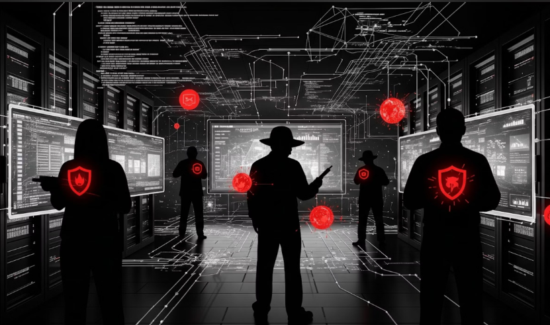SIEM vs EDR: Which One Does Your Business Need?


Granted, the question of SIEM vs EDR does not necessitate a mutually exclusive answer. Your enterprise could, in fact, benefit from both an EDR and a SIEM solution, depending on your IT infrastructure.
However, the question of SIEM vs EDR also highlights important distinctions between two vital cybersecurity analytics solutions. But how can your enterprise resolve SIEM vs EDR? Let’s take a look in depth at both cybersecurity solutions.
What is SIEM?
SIEM refers to Security Information and Event Management. It provides log management and security event correlation, both of which offers more visibility into enterprise IT environments. In fact, SIEM places a great emphasis on its log capabilities.
Normally, SIEM allows your enterprise to collect logs from throughout your network, normalize that data, and analyze it for security events. Additionally, SIEM provides IT security teams with alerts on potential breaches for investigations.
What is EDR?
Conversely, EDR functions as an extension of next-generation endpoint security. Accordingly, EDR solutions record and store behaviors on enterprise endpoints, analyze that data for suspicious behaviors and block malicious activity. Moreover, these solutions can provide contextual information on suspicious behavior and provide remediation suggestions.
In other words, EDR can help your enterprise detect cyber attacks which slipped past your digital perimeter security. Also, it offers granular visibility, threat investigations, and detection of fileless malware and ransomware. Critically, it too can provide security alerts for investigations.
SIEM vs EDR
On the one-hand, EDR draws from endpoint data sources as one might expect from an endpoint security capability. Its design lends itself to endpoint prevention, endpoint detection, and analysis. Additionally, EDR typically doesn’t need to deal with encryption issues in its analyses. Usually, these solutions come with out-of-the-box capabilities and pre-built dashboards and workflows.
However, EDR remains heavily tied to the endpoint rather than the network as a whole. Also, EDR hinges on total device visibility to function properly, which can prove a tall order for businesses.
On the other hand, SIEM draws from unlimited data sources; the only constraints come for the correlation rules placed on it by enterprises themselves. Thus SIEM allows for security analysis and compliance fulfillment much more readily. It also provides data contextualization.
However, SIEM can run into issues with encryption. Also, these solutions tend to focus heavily on detection over prevention. Without logged data, SIEM can’t function, which can create new challenges for underprepared enterprises.
Obviously, both SIEM and EDR provide security alerts. Therefore, both can run into similar problems concerning false positives and alert bombardments overwhelming security teams.
As we alluded to above, SIEM vs EDR does not mean one solution is superior to another. In fact, you could say these disparate analytical solutions complement each other. Working together, SIEM and EDR can provide your enterprise with enhanced visibility and cybersecurity. Trying to pick one over the other actually creates more issues long-term.
Therefore, SIEM vs EDR is, in fact, a false dichotomy. You need both in order to achieve better cybersecurity optimization. Best get started building a solid InfoSec platform now before hackers find a way past your digital perimeter. Sadly, it’s not a matter of if but when. So get your perimeter fortified with the right analytic tools today!




















